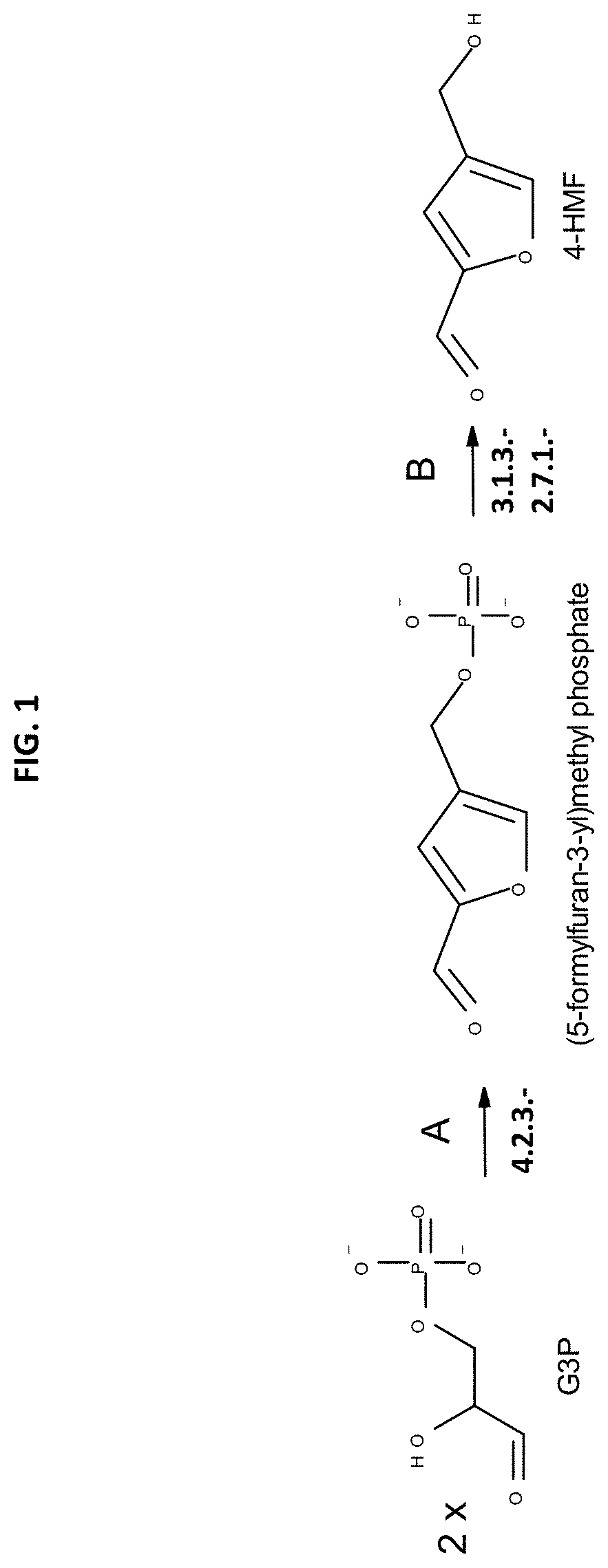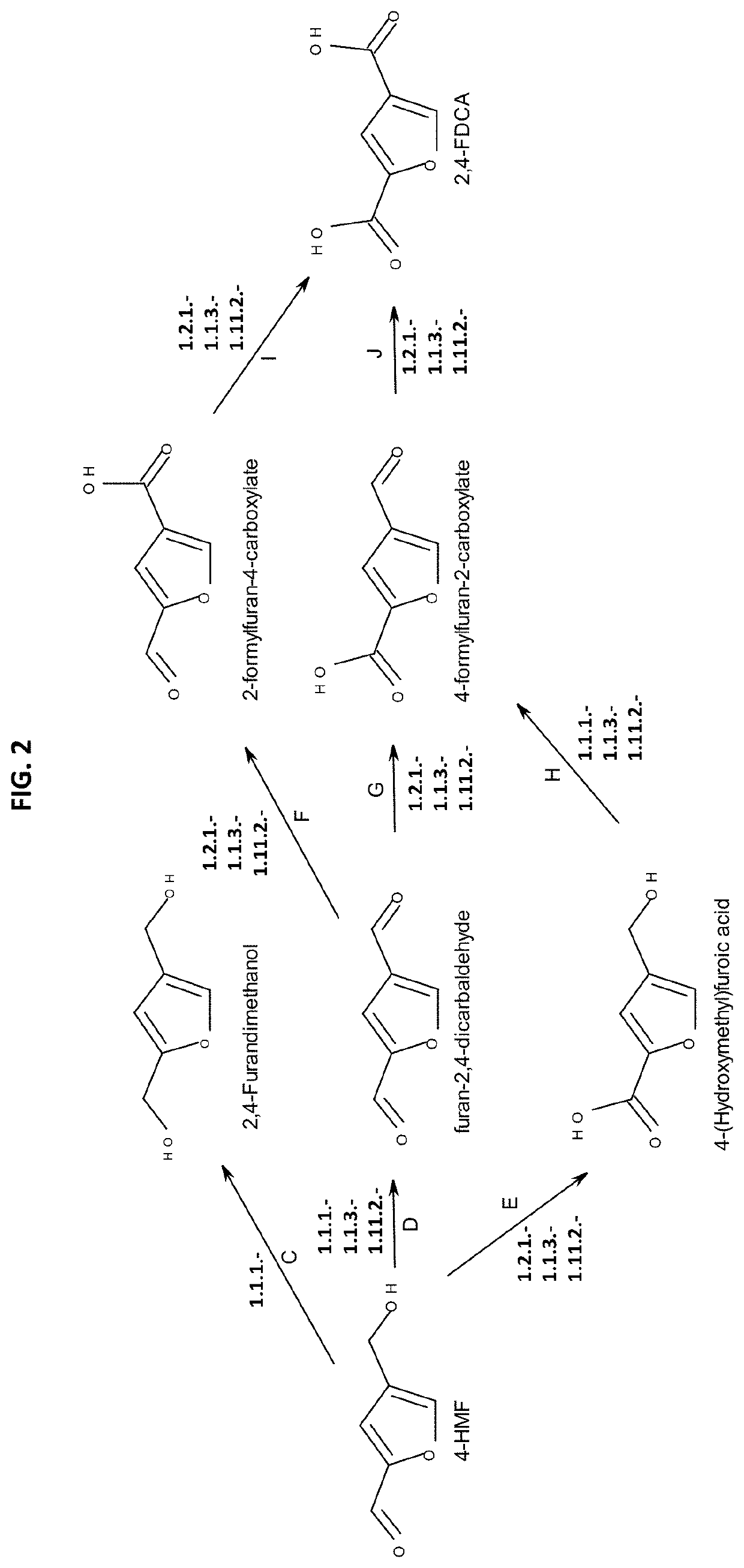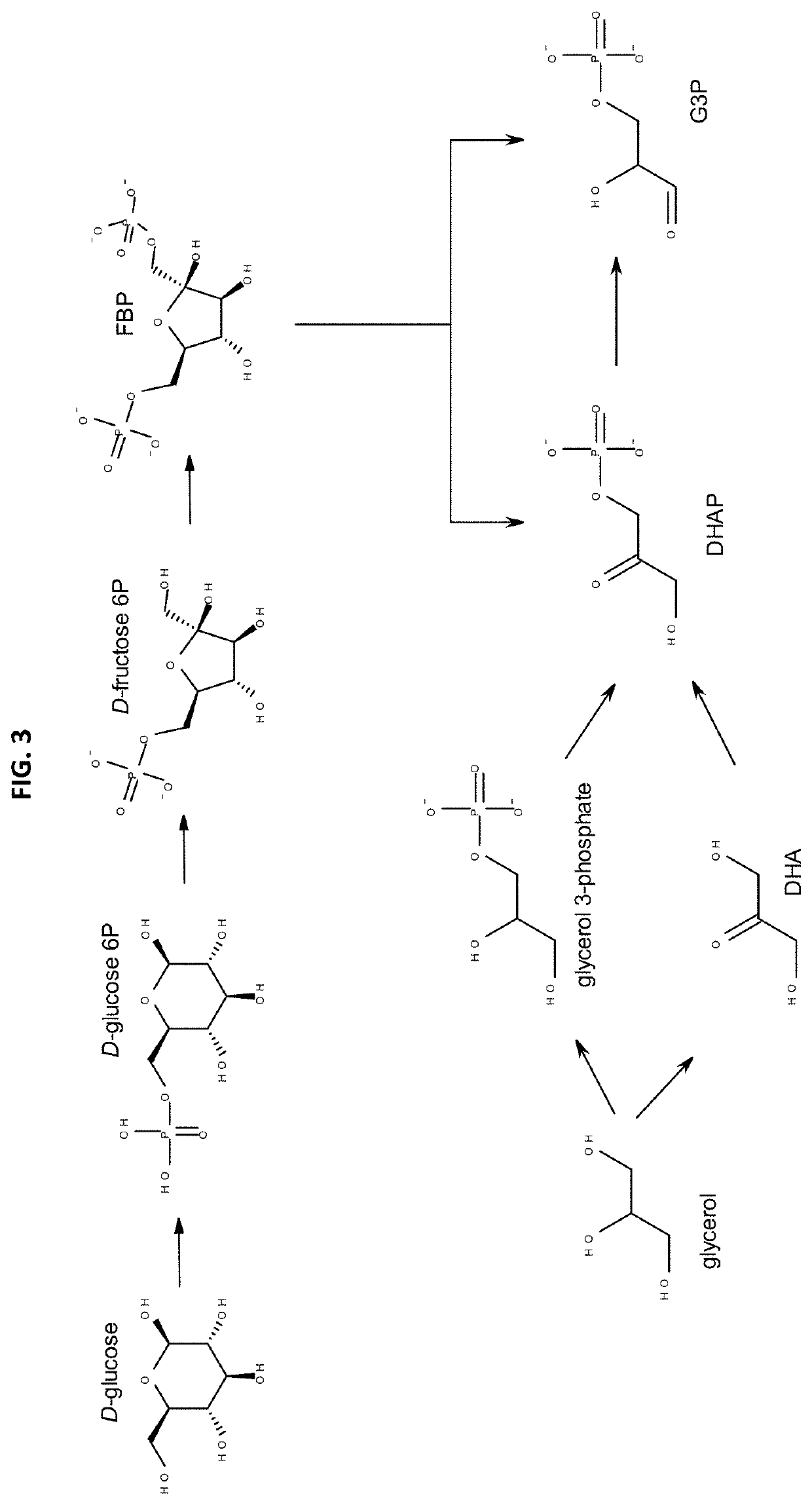Method for the in vivo synthesis of 4-hydroxymethylfurfural and derivatives thereof
a technology of in vivo synthesis and 4hydroxymethylfurfural, which is applied in the field of recombinant microorganisms, can solve the problems of reducing the production cost of 2,5-fdca, limiting the expansion of monomer usage, and existing technologies not cost-competitive when, and achieves superior properties
- Summary
- Abstract
- Description
- Claims
- Application Information
AI Technical Summary
Benefits of technology
Problems solved by technology
Method used
Image
Examples
example 1
n and Purification of Methyl Phosphate Synthase
[0281]The expression and purification of enzymes used in enzymatic assays was carried out under the following conditions: Genes coding 27 (5-formylfuran-3-yl)methyl phosphate synthases candidates (Table 1) were synthesized by GenScript and cloned in expression vector pET28a in NdeI and BamHI restriction sites. The expression vector was transformed into E. coli BL21 (DE3) and the transformant was stored in 15% glycerol until use for enzyme expression.
[0282]The stored transformant was inoculated into 50 mL of TB broth containing kanamycin at 37° C. with agitation for 16h to prepare a seed culture. The seed culture was added to 300 mL of TB broth containing kanamycin with initial OD (600 nm) of 0.2, the culture was then incubated at 37° C. with agitation until OD (600 nm) reached 0.6-0.8 at which point 1 mM IPTG was added to induce expression overnight at 18° C. with agitation.
[0283]Following overnight expression, the cells were centrifuge...
example 2
furan-3-Yl)Methyl Phosphate Production from G3P
[0284]The (5-formylfuran-3-yl)methyl phosphate production from glyceraldehyde-3-phosphate (G3P) by enzyme candidates described in Table 1 was demonstrated in vitro by incubating approximately 450 μg of purified candidates with a 1 mL solution containing 5 mM of glyceraldehyde-3-phosphate (Sigma) in 20 mM Tris-HCl, 200 mM NaCl (pH 7.4) buffer. The reaction was incubated at 37° C. for 2 hours. Reaction vessels without synthases or substrate (G3P) were used as negative controls. The reaction was monitored by UV-Vis using a spectrophotometer (SpectraMax M5, Molecular Devices), accordingly to the 5-formylfuran-3-yl)methyl phosphate Molar absorption coefficient (c) 280 nm. Product formation was also confirmed by HPLC analysis.
[0285]The chromatographic quantitative analysis of (5-formylfuran-3-yl)methyl phosphate production was performed in a HPLC-DAD (Thermo Ultimate 3000) equipped with an Aminex HPX-87H Biorad column (300×7.8 mm). The column...
example 3
n of 4-Hydroxymethylfurfural (4-HMF) from (5-Formylfuran-3-Yl)Methyl Phosphate
[0287]The production of 4-HMF from (5-formylfuran-3-yl)methyl phosphate using phosphatases was demonstrated using commercially available phosphatase, E. coli lysates, and yeast lysates to demonstrate their capability to produce 2,4-HMF from (5-formylfuran-3-yl)methyl phosphate. The substrate (5-formylfuran-3-yl)methyl phosphate was produced by (5-formylfuran-3-yl)methyl phosphate synthases as described at Example 2.
[0288]The chromatographic quantitative analysis of (5-formylfuran-3-yl)methyl phosphate and 4-HMF production was performed in a HPLC-DAD (Thermo Ultimate 3000) equipped with an Aminex HPX-87H Biorad column (300×7.8 mm). The column was maintained at 50° C. and the mobile phase used was a 5 mM H2SO4 solution with flow rate of 0.75 mL / min (isocratic gradient mode). Both compounds were detected at 280 nm.
[0289]To carry out the reaction demonstrating the production of 4-HMF from (5-formylfuran-3-yl)m...
PUM
| Property | Measurement | Unit |
|---|---|---|
| Volume | aaaaa | aaaaa |
| Volume | aaaaa | aaaaa |
| Time | aaaaa | aaaaa |
Abstract
Description
Claims
Application Information
 Login to View More
Login to View More - R&D
- Intellectual Property
- Life Sciences
- Materials
- Tech Scout
- Unparalleled Data Quality
- Higher Quality Content
- 60% Fewer Hallucinations
Browse by: Latest US Patents, China's latest patents, Technical Efficacy Thesaurus, Application Domain, Technology Topic, Popular Technical Reports.
© 2025 PatSnap. All rights reserved.Legal|Privacy policy|Modern Slavery Act Transparency Statement|Sitemap|About US| Contact US: help@patsnap.com



